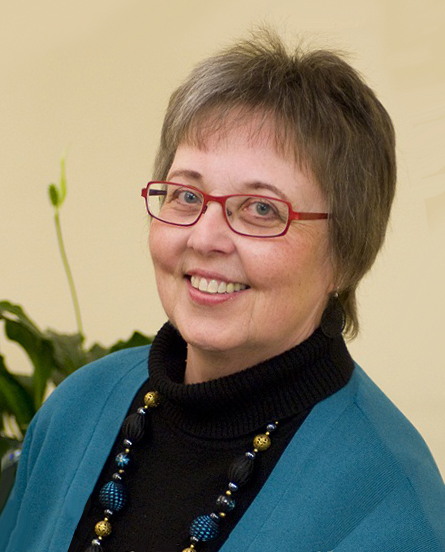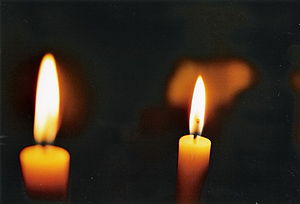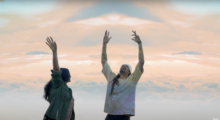Megory Anderson is the founder of the Sacred Dying Foundation, an organization designed to bring sacredness and a spiritual element to the end-of-life experience. She is a theologian, educator, liturgist and author of the books Sacred Dying: Creating Rituals for Embracing the End of Life and Attending the Dying. Additionally, she just received her PhD in Theology of the Dying from Canterbury Christchurch in England. The dissertation itself is called Listening to the Dying.
Katie Ryan: What is the Sacred Dying Foundation and how did you get involved?
Megory Anderson: Sacred Dying Foundation is an educational organization that focuses primarily on end-of-life vigiling. So the priority is that people moving on to active dying need spiritual presence — somebody there to facilitate that experience. Most people die alone or with family who don’t really know what to do. We train volunteers to be there until the death happens. And that can go on for hours or a couple of days. That’s how we originally started, in just being present with those who are dying. We use spiritual tools, we use ritual, we use music, anything a person feels will help in the process of dying. We train volunteers to work either within an institution like a hospital, or just individuals who wanted to make this their primary work. We focus on multi-religious and multi-cultural traditions as well.
Katie: Can you explain what sacredness means and how it applies to death?
Megory: I don’t want to say it’s the opposite of the medical model. But it is perhaps the yin to the yang. Most of our deaths happen within that medical model. Sacred Dying believes that once [a] body begins to shut down physically, that the medical needs at that point are just comfort care — calming someone down. Then the spiritual [element] automatically kicks in. So what can we do to help facilitate that? It can be anything from helping with fear, anxiety, with what I call the oh-god-I’m-dying realization, whatever religious traditions there are; setting the stage so that a person rooted in a central tradition knows that the space around her or him is set up [properly]. So it can be very specific, or it can be very general.
Katie: What does vigil training entail?
Megory: It’s an individualized process. You can’t go in with a checklist, although beginners want to do that. And it is something we encourage them to do, but then you throw the checklist out. It’s understanding what vigiling is, what sacred presence is, what in creating that space and upholding it is. How to be
quiet. How to sit still. How to put the person dying at the very very center of your energy, of the environment. It’s about the person dying, not the people around that person — it’s not even about loved ones. It’s all about the person dying.
Katie: What are the ethics involved with dying and what is pastoral care of the dying?
Megory: I think the primary agreement is that you don’t superimpose your expectations. You go in with a lot of intuition, but you go in neutral. You’re there to respond to what the dying person needs and [to] adapt to it intuitively. So if there’s a lot of fear involved you begin to respond with comfort, with trying to help that person move on from a place of fear. When it comes to talking about the divine, about god, the most that we will say is that you are loved; that you are going to a place of love, and that they can find this place of love inside [themselves]. If somebody is really struggling with fear and being judged I think you can respond in a way that makes them feel like they’re not going into a place where they’ll take guilt and judgment [along].
Katie: How do you intend to change the current cultural stigma that accompanies death and dying?
Megory: In a number of different ways. We will try to quarter off the sacred space in a hospital where someone is dying, to put a symbol on the door, or a candle in the table outside of it. That [way] other residents and staff can see there’s a death happening so that there’s awareness of this sacred thing happening. And that’s a big deal!
“We will try to put a symbol on the door, or a candle in the table outside of it so that other residents and staff can see there’s a death happening.”
There’s a story from when I was doing some training in the middle of the country about someone from Tibet dying in a hospital, and the hospital didn’t know what to do, [so] a monk was called in. And he sat and chanted and prayed all throughout the night and the people in the hospital had just never seen anything like it, there was this kind of shiver people felt.
Katie: Is there anything else you’d like our SevenPonds readers to know?
Megory: Don’t wait until 20 minutes before you die. We don’t always have that luxury but more and more deaths are becoming prolonged so that we have time to prepare. I always say there’s a progression that’s normal, that [occurs] when we first hear we’re dying:
* We often want to get practical papers in order first, which is natural. Let family members know where you keep them.
* Move to putting relationships in order. And that can be very proactive, or it can be simply letting things go.
* When relationships are feeling at a good place people begin looking at the spiritual dynamics, at their relationship with the divine — where am I going? What am I going to face? Do I have a god issue in front of me? Unfortunately most people put that off until 20 minutes before they’re ready to die. And I want to say push it up, start dealing with that sooner rather than later.
Katie: Thanks for talking with us!
Megory: Thank you.

 What is the Sacred Dying Foundation? An Interview with Megory Anderson
What is the Sacred Dying Foundation? An Interview with Megory Anderson





 Our Annual Seven Holiday Gifts for Someone Who Is Grieving, 2024 Edition
Our Annual Seven Holiday Gifts for Someone Who Is Grieving, 2024 Edition
 “Making Mobiles” by Karolina Merska
“Making Mobiles” by Karolina Merska
 “Hands Up to the Sky” by Michael Franti & Spearhead
“Hands Up to the Sky” by Michael Franti & Spearhead














